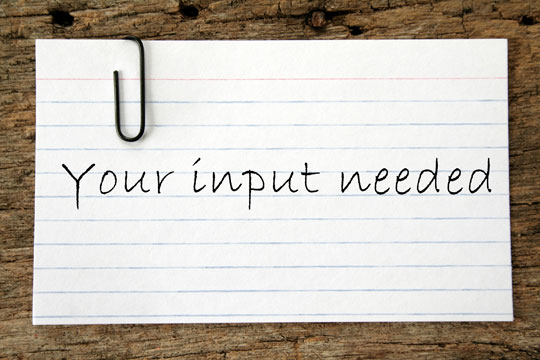
It’s 2018, and it’s a great year to be courageous local government leaders. It’s a year to think about how to better engage the communities we serve, all the communities we serve, so that our projects and services are the best they can be. You may be thinking, we have it down. We serve all of our communities equally and everyone has the same opportunity to participate in public processes and give their input. But, remember the thing about equally doing anything across your jurisdiction… it doesn’t take into account structural differences in burdens and needs from different populations. And so if your goal in 2018 is to receive meaningful input from a section of your community that you just aren’t reaching, it’s time to try something new. It’s time to look at engagement through an equity lens. Through this lens, it doesn’t matter if everyone had the opportunity to participate; it matters whether they actually do. It matters whether or not you are receiving input from a representative portion of your population.
Why use an equity lens?
Government can be transformational. It does a whole lot of good. But throughout history, it has also done a whole lot of a bad. Because of the history of disinvestment in communities of color and the role government played, if your jurisdiction is seeking to get input on work from a segment of your community that has been marginalized, you must recognize this history. The Government Alliance on Race and Equity write in their Racial Equity Toolkit.
It is especially critical to engage communities of color. Due to the historical reality of the role of government in creating and maintaining racial inequities, it is not surprising that communities of color do not always have much trust in government. In addition, there is a likelihood that other barriers exist, such as language, perception of being welcome, and lack of public transportation, or childcare.
They further elaborate…
It is not enough to consult data or literature to assume how a proposal might impact a community. Involving communities impacted by a topic, engaging community throughout all phases of a project, and maintaining clear and transparent communication as the policy or program is implemented will help produce more racially equitable results.
But some of our typical government meetings aren’t set up that way. Regardless of the area in which we are working, we use the same approach. We have a one size fits all way of sharing information and inviting residents into our processes to provide input. And in many cases, it’s not working for everyone.
How to get started?
So with that recognition and with some generous grant funding, my jurisdiction is trying some new engagement approaches, taking cues from equity experts, and relying on our resident leaders to guide us.
- Spend some time getting know the area before scheduling a meeting and be mindful of religious or cultural events. Ask members of the community to identify the best time for public meetings. In one case, we learned to avoid one weekday evening that many families are typically at Church services.
- Hold meetings in the community in which you are doing work, rather than expecting folks to come to City hall. This is also a great way to get to know about individual community assets and the people that run them (e.g. Community Centers, Churches, Schools)
- Include free childcare to make it easy for parents to attend.
- Including meals/food for participants, and lead with food and conversation rather than expecting folks to wait through presentations to eat. Relationships are formed when people break bread together. Since meetings are better attended, after traditional work hours, this makes sense.
- Use community sourced vendors when possible, and take every meeting as an opportunity to make connections with people, schools, businesses etc. This is a great way to find new vendors for your organization, and also to give back to the community.
- Invest resources in multiple modes of communication.This includes door to door, conference calls, flyers, emails, NextDoor etc. to get the word out. People like to be communicated with differently, and so different approaches matter.
- Start early. Do more engagement in the very beginning stages of a project before it is too late to make adjustments. This way you can do more collaborating, build stronger connections, and ultimately get to better results that are designed for and with your constituents. For reading on using a design thinking process, check out these great resources from Stanford.
While not all of this may fit within your current budgetary confines, I invite you to try a few suggestions and share what else you are doing in the space of equitable engagement. This way government truly can bring all the voices to the table who are affected by projects and services, and by doing so, make better decisions, build stronger communities together, and build critical trust.
Other recent related ELGL reads include:
Assessing Racial Equity in Your Organization
Why We Should Stop Using the Word ‘Citizen’
